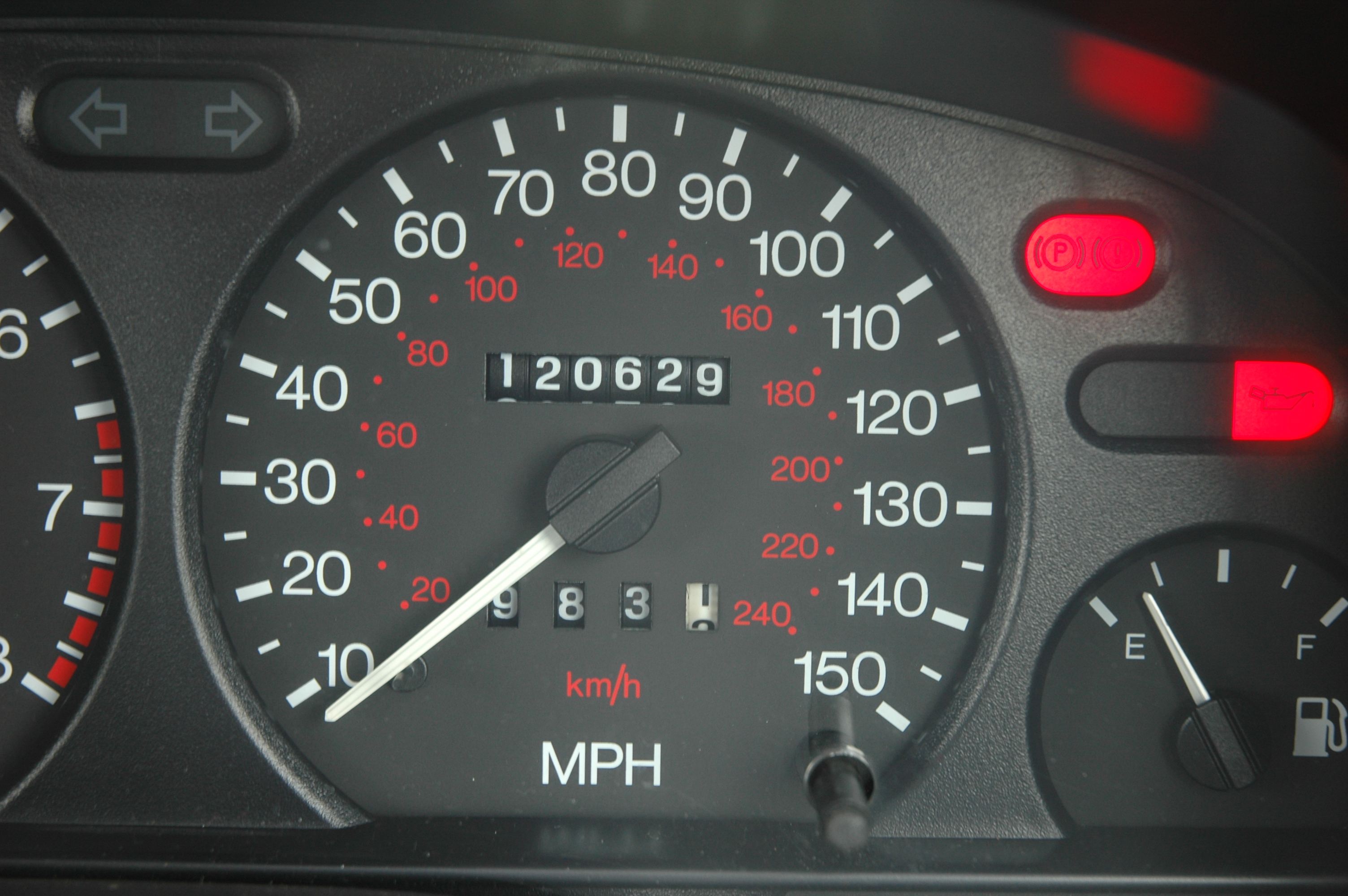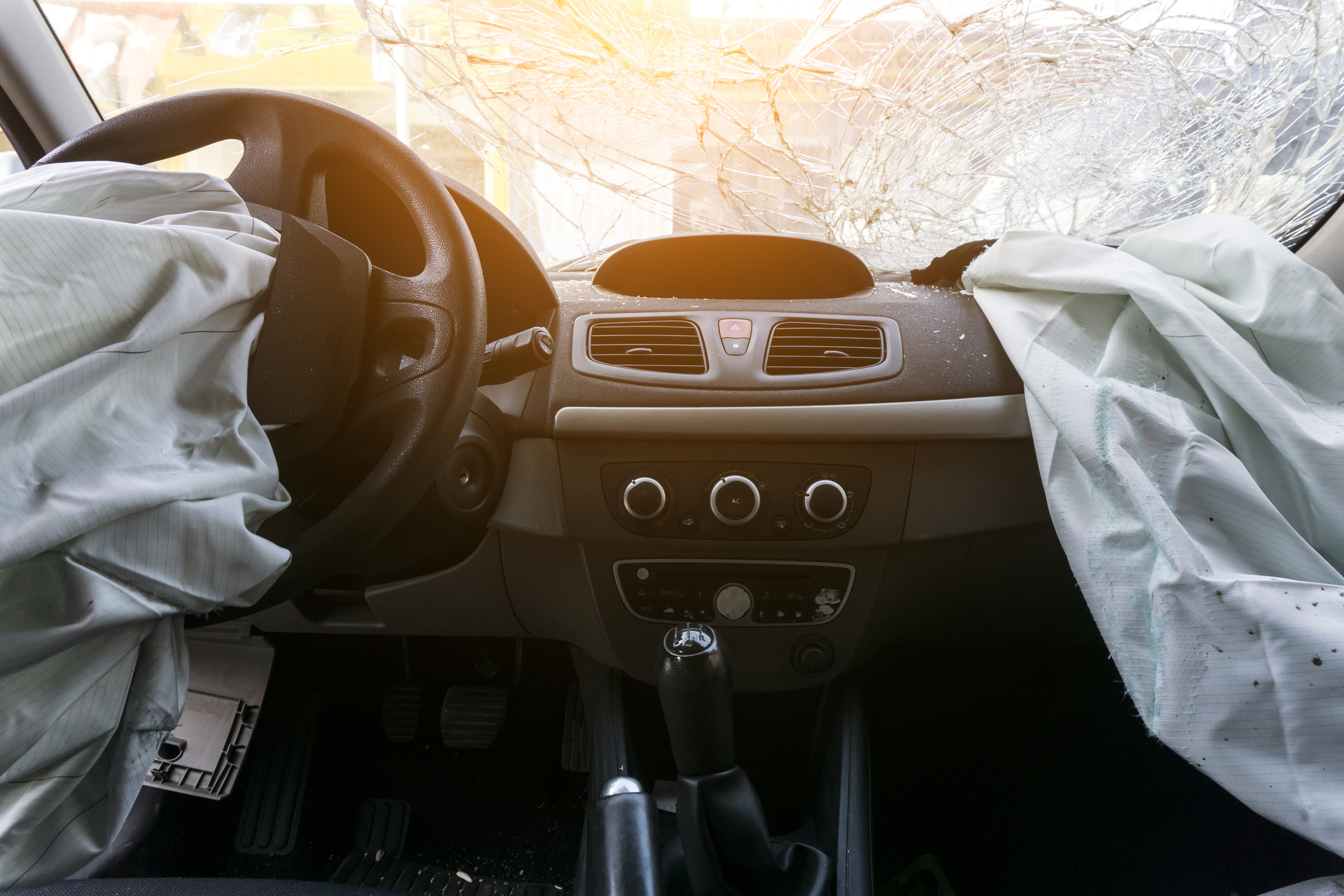Can the 100,000 Mile Rule in Car Insurance Help You Avoid Overpaying for Coverage You Don’t Need?
The 100,000 mile rule in car insurance can help you slash premiums by slashing coverage you can’t use.


Car insurance companies spend a lot of time explaining the different types of car insurance and why you need all that coverage. They spend decidedly less time explaining which types you don’t need or how to avoid overpaying for excess coverage. That’s where the 100,000 mile rule in car insurance comes in.
The rule of thumb isn’t perfect, but it’s a useful starting point to help you figure out how much car insurance you need and what types of coverage you should skip. The idea behind the rule is to avoid paying for additional coverage that, because of your car’s market value, you can’t really benefit from anyway.
While not having enough coverage is definitely a risk worth avoiding, it’s just as important to avoid paying for more coverage than you need or more coverage than you can actually use.
From just $107.88 $24.99 for Kiplinger Personal Finance
Become a smarter, better informed investor. Subscribe from just $107.88 $24.99, plus get up to 4 Special Issues

Sign up for Kiplinger’s Free Newsletters
Profit and prosper with the best of expert advice on investing, taxes, retirement, personal finance and more - straight to your e-mail.
Profit and prosper with the best of expert advice - straight to your e-mail.
Not only are the higher premiums that come with that unnecessary coverage a waste of money, but that’s money that would be better put in a high yield savings account or CD to cover your out of pocket costs in a car accident or maybe save up for your next car if your current ride is getting ready to retire.
To keep your car insurance premiums from soaring, here’s a breakdown of the 100,000 mile rule and some tips for figuring out the right amount of coverage for your car.
What is the 100,000 mile rule in car insurance?

The 100,000 mile rule refers to the general recommendation to drop collision and comprehensive coverage on cars once they’ve passed the 100,000 mile mark. By dropping the extra coverage, you stand to save hundreds on car insurance while theoretically not exposing yourself to much more risk.
The logic behind the rule is that as a car gets older or racks up more mileage, its market value goes down. Insurance companies won’t pay more for a claim than the current market value of your car, and once you have an accident where the cost of repairs is higher than the market value, your car will be declared totaled.
Even if the repair is an easy enough fix and you still want to drive it after it’s been totaled, you can only get liability coverage for the car going forward, not collision or comprehensive coverage.
Because of those limitations, there’s a point at which the cost of coverage just isn’t really worth the low maximum payout. While there are a lot of factors that go into the market value of a car, the 100,000 mile mark is the tipping point where you want to start reevaluating your coverage.
What is collision and comprehensive coverage?

This rule doesn’t mean you should cancel your car insurance altogether. No matter what car you drive, you will need liability insurance at a minimum. There are also other types of car insurance that can still be worthwhile for some drivers.
The 100,000 mile rule refers specifically to collision insurance and comprehensive insurance. These optional forms of coverage are used to pay for damages to your car in an accident where you’re at fault (in the case of collision insurance) or, in the case of comprehensive insurance, when your car is damaged in other ways, like a hailstorm or a tree falling on it.
Even if you don’t have these optional types of insurance, your car would still be covered in accidents where you’re not at fault by the liability insurance of the other driver. So canceling this extra coverage doesn’t leave you completely unprotected, and you’d still be able to legally drive your car.
LiMu Emu & Doug™ are on a mission to customize your insurance so you only pay for what you need. It only takes minutes to see how much you could save.
*Based on Liberty Mutual Online Mystery Shopper Survey, December 2021
How to figure out the right time to drop collision and comprehensive coverage

It would be convenient if the 100,000 mile rule was a hard, universal guideline that applied to every car in every situation. Unfortunately, there are a lot of variables beyond mileage that will determine the right time to stop paying for collision and comprehensive car insurance.
Instead of immediately dropping the extra coverage the second you cross the 100,000 mile mark, use that milestone to answer these five questions:
Are you leasing the car?
If you’re leasing the car, the 100,000 mile rule probably doesn’t apply. Many leasing agents require drivers to keep full coverage, which typically includes collision and comprehensive coverage.
Are you still paying off the car loan?
Like leasing agents, some lenders might require you to maintain full coverage until your loan is paid off. So, if you’re still making payments, check with your lender about its insurance requirements before you start doing the math on whether the extra coverage is still worth it.
What is the current market value of your car?
You can use tools from sites like Carfax or Kelley Blue Book (KBB) to estimate the current market value of your car. Remember, this number is the estimate of what you could get for it if you were to sell your used car in its current condition to a driver living in your same town.
Car insurance companies have their own methods of calculating market value so the Carfax or KBB estimate you get isn’t guaranteed.
But as long as you’re honest about the current condition of the car, the estimate is typically close enough for the purpose of deciding whether it’s worth keeping collision and comprehensive coverage.
How much would it cost to repair the car after an accident?
This one is a little harder to calculate, because you don’t know exactly what repairs would be needed in this hypothetical accident and repair costs vary widely across different makes and models.
As a starting point, use the car repair costs estimate tool from AAA or the Napa Auto Care Repair Estimator to get a ballpark figure on various types of repairs. Alternatively, you can contact local collision repair centers to ask about average costs.
Compare these repair costs to your current market value. If many of them are close to or higher than your car’s estimated value, it may be a good time to drop collision and comprehensive coverage because the odds of your car being declared totaled is high.
What’s your plan in the event of an at-fault accident?
While canceling that extra coverage might make sense on paper, the decision ultimately comes down to how you would handle an at-fault accident or other unexpected event damaging your car.
Even on older cars, the few thousand you would get if it was declared totaled could be enough for a down payment on a new car if you were to keep your collision and comprehensive coverage.
If you have enough in savings right now to cover a down payment if you needed to, that might not be worth the higher premiums – especially when you could add the money you save by dropping coverage to your savings.
But if you wouldn’t be able to pull together a down payment right now, or doing so would force you to tap into other funds like retirement savings or your home equity, it may be worth the extra premium payments just to know that, in the worst case scenario, you’d get the cash you need to buy a new car.
Still, check the market value of your car at least once a year. If it reaches the point where the market value is close to your deductible, it’s probably time to drop regardless of any other factors.
Get more insurance tips and other personal finance insights straight to your inbox. Subscribe to our daily newsletter, A Step Ahead.
Related content
Profit and prosper with the best of Kiplinger's advice on investing, taxes, retirement, personal finance and much more. Delivered daily. Enter your email in the box and click Sign Me Up.

Rachael Green is a personal finance eCommerce writer specializing in insurance, travel, and credit cards. Before joining Kiplinger in 2025, she wrote blogs and whitepapers for financial advisors and reported on everything from the latest business news and investing trends to the best shopping deals. Her bylines have appeared in Benzinga, CBS News, Travel + Leisure, Bustle, and numerous other publications. A former digital nomad, Rachael lived in Lund, Vienna, and New York before settling down in Atlanta. She’s eager to share her tips for finding the best travel deals and navigating the logistics of managing money while living abroad. When she’s not researching the latest insurance trends or sharing the best credit card reward hacks, Rachael can be found traveling or working in her garden.
-
 What to expect from the global economy in 2026
What to expect from the global economy in 2026The Kiplinger Letter Economic growth across the globe will be highly uneven, with some major economies accelerating while others hit the brakes.
-
 What You Need to Do With Your 401(k) Before 2025 Is Over
What You Need to Do With Your 401(k) Before 2025 Is OverBefore 2025 ends, check your 401(k) contributions, investments, and catch-up eligibility to lock in this year’s tax savings and employer match.
-
 3 Year-End Tax Moves You Can't Afford to Miss
3 Year-End Tax Moves You Can't Afford to MissDon't miss out on this prime time to maximize contributions to your retirement accounts, do Roth conversions and capture investment gains.
-
 The Top 22 Gifts for Grandkids from Walmart in 2025
The Top 22 Gifts for Grandkids from Walmart in 2025From PlayStation to Labubu, you'll find the hottest gifts of 2025 for your grandkids at Walmart this year. Some of them are up to 78% off.
-
 CD vs. Money Market: Where to Put Your Year-End Bonus Now
CD vs. Money Market: Where to Put Your Year-End Bonus NowFalling interest rates have savers wondering where to park cash. Here's how much $10,000 earns in today's best CDs versus leading money market accounts.
-
 Meet the World's Unluckiest — Not to Mention Entitled — Porch Pirate
Meet the World's Unluckiest — Not to Mention Entitled — Porch PirateThis teen swiped a booby-trapped package that showered him with glitter, and then he hurt his wrist while fleeing. This is why no lawyer will represent him.
-
 Smart Business: How Community Engagement Can Help Fuel Growth
Smart Business: How Community Engagement Can Help Fuel GrowthAs a financial professional, you can strengthen your brand while making a difference in your community. See how these pros turned community spirit into growth.
-
 Smart Money Moves Savers Should Make in 2026
Smart Money Moves Savers Should Make in 2026These steps will get you on the road to achieving your 2026 savings goals.
-
 How Much Would a $50,000 HELOC Cost Per Month?
How Much Would a $50,000 HELOC Cost Per Month?Thinking about tapping your home’s equity? Here’s what a $50,000 HELOC might cost you each month based on current rates.
-
 My First $1 Million: Self-Employed Trader, 50, San Francisco
My First $1 Million: Self-Employed Trader, 50, San FranciscoEver wonder how someone who's made a million dollars or more did it? Kiplinger's My First $1 Million series uncovers the answers.
-
 Waiting for Retirement to Give to Charity? Here Are 3 Reasons to Do It Now, From a Financial Planner
Waiting for Retirement to Give to Charity? Here Are 3 Reasons to Do It Now, From a Financial PlannerYou could wait until retirement, but making charitable giving part of your financial plan now could be far more beneficial for you and the causes you support.
